Our Blog - Porto, Portugal (Day 2)
We started out our second day with a light breakfast, including a couple pastéis de nata, which are traditional Portuguese egg tarts. We'd actually tasted them before when we were in Macau. They were created in the 18th century by Catholic monks who had moved from France to Lisbon. At the time, convents and monasteries used large quantities of egg whites for starching clothes and it was quite common for them to use the leftover egg yolks to make cakes and pastries. This resulted in the proliferation of sweet pastry recipes throughout the country.
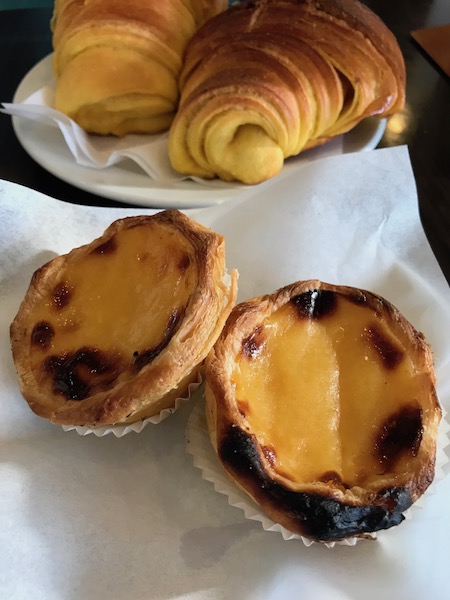
You probably thought all we did in Porto was drink, and you basically would be pretty correct in Day 1. Day 2 in Porto was the sightseeing day. We started at the Igreja da Ordem do Terço. It is stuck between houses on a side street, built in 1759. The façade is almost entirely blue tiles with a bit of granite and rococo elements. They state that the central window is noteworthy for its' unique shape.

Just outside of the Cathedral (the next stop) is a statue of Vimara Peres on horseback. He was a 9th century nobleman who became the first ruler of the County of Portugal (note that I said "county" as at that time, the Kingdom of Asturias (ruled by King Alfonso III) was separated into several counties). He was able to expel the Moors and founded a fortified town under his own name Vimaranis which later became Guimarães.
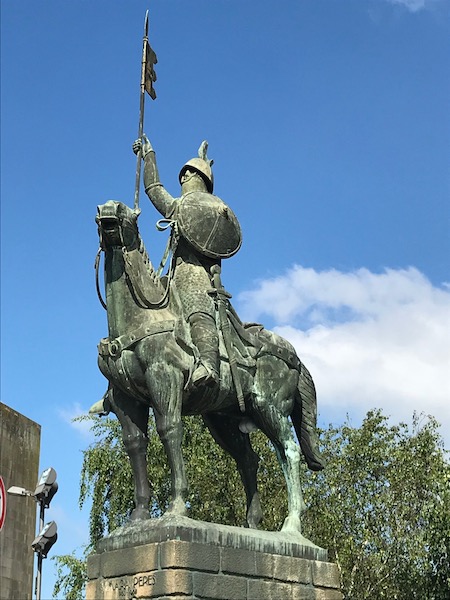
The Sé do Porto, or the Porto Cathedral is one of the city's oldest monuments and one of the most important local Romanesque monuments. It was built in the 12th century in Romanesque style and was modified during the Gothic period in the 18th century. The façade lacks decoration, somewhat bland in fact.
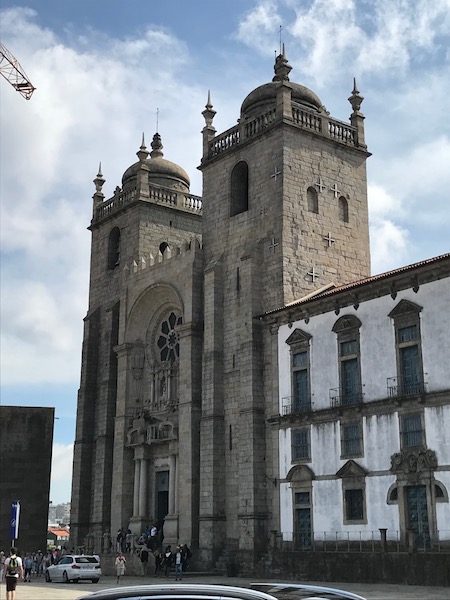
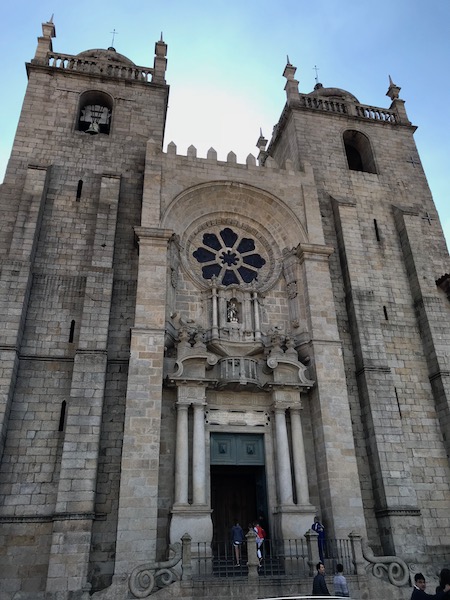
The nave is rather narrow, and the baptistery contains a bronze bas-relief by António Teixeira Lopes, depicting the baptism of Christ by John the Baptist.
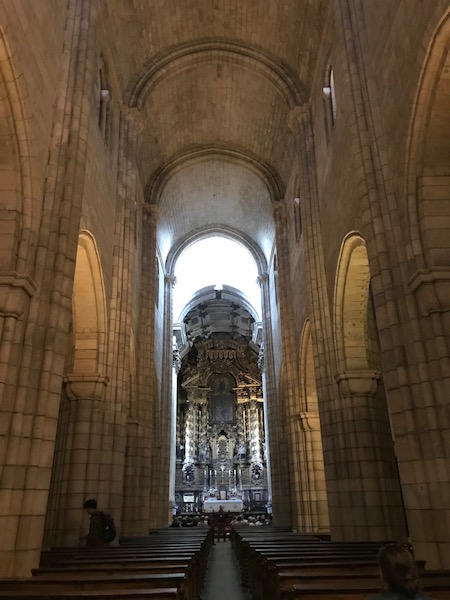
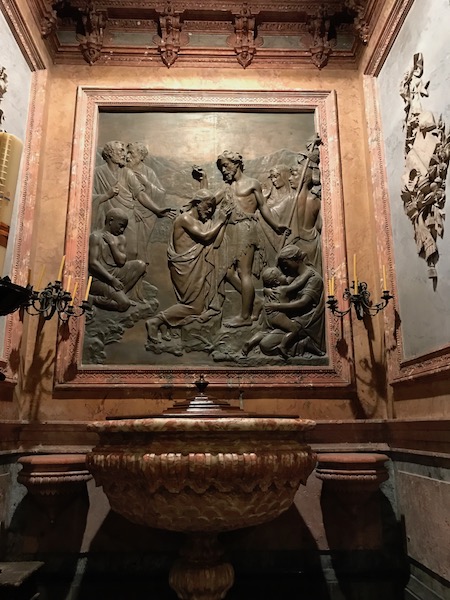
The high altar was built between 1727 and 1729, designed by Santos Pacheco and carved by Miguel Francisco da Silva, and is an important work of Portuguese Baroque.
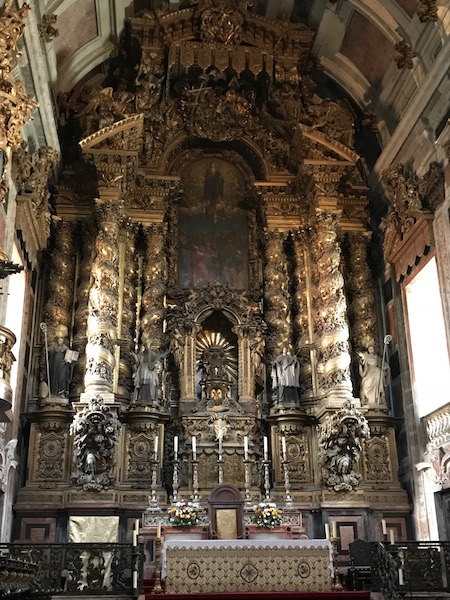
The Choir stalls and the organ case are quite intricately carved.
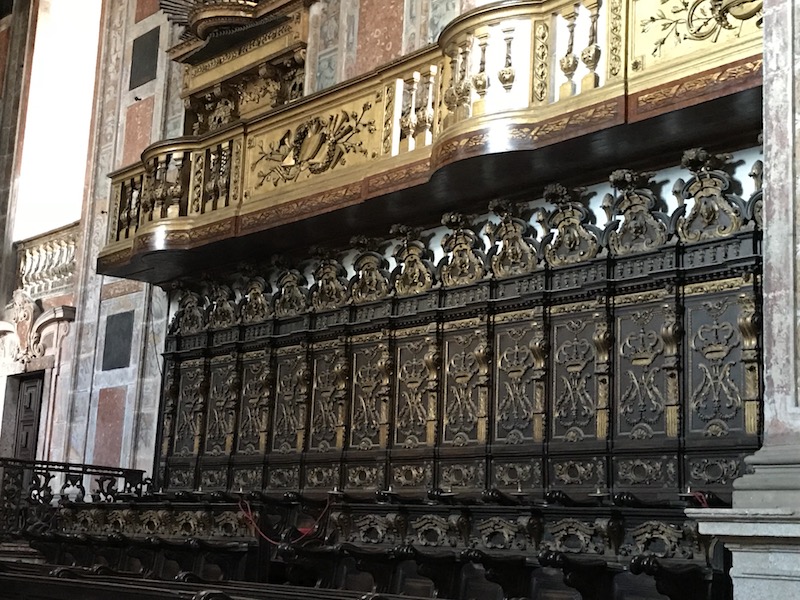
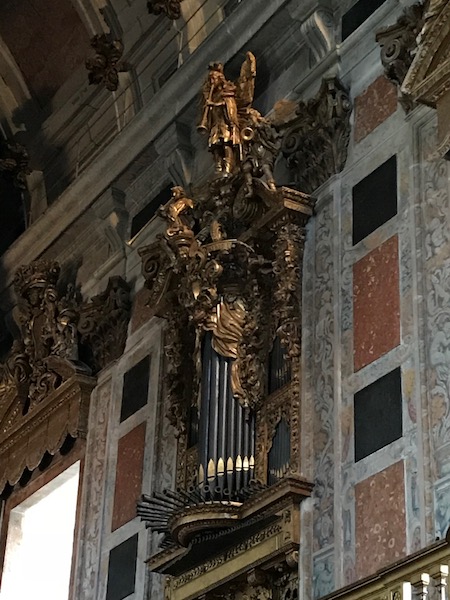
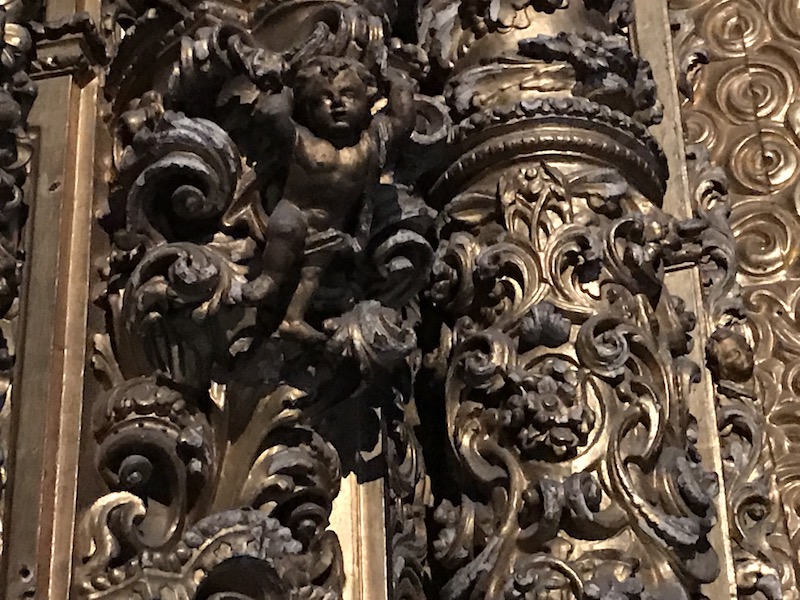
The large square in front of Porto's Cathedral was built during the Middle Ages. In the middle of the square is an ornately carved twisting stone pillory, called a pelourinho by the Portuguese. It was built in the 1800s and had a purely decorative function.
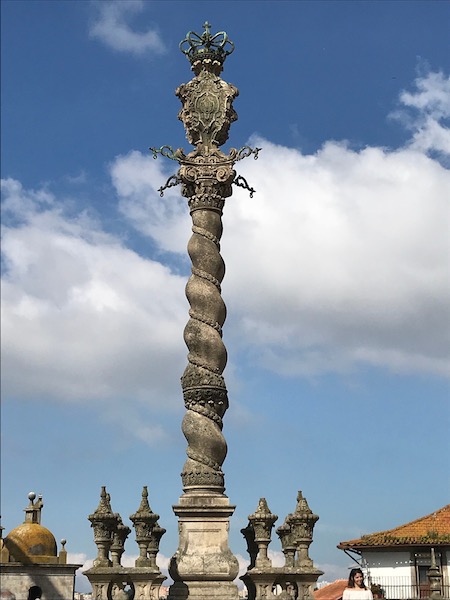
The Bishops Palace date from the 12th century although it was rebuilt in the 18th. We didn't go in, just went by.
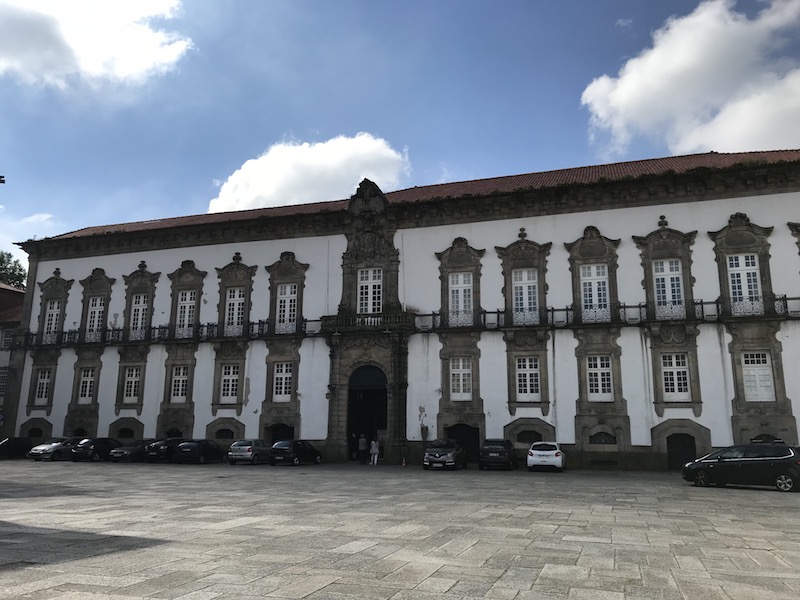
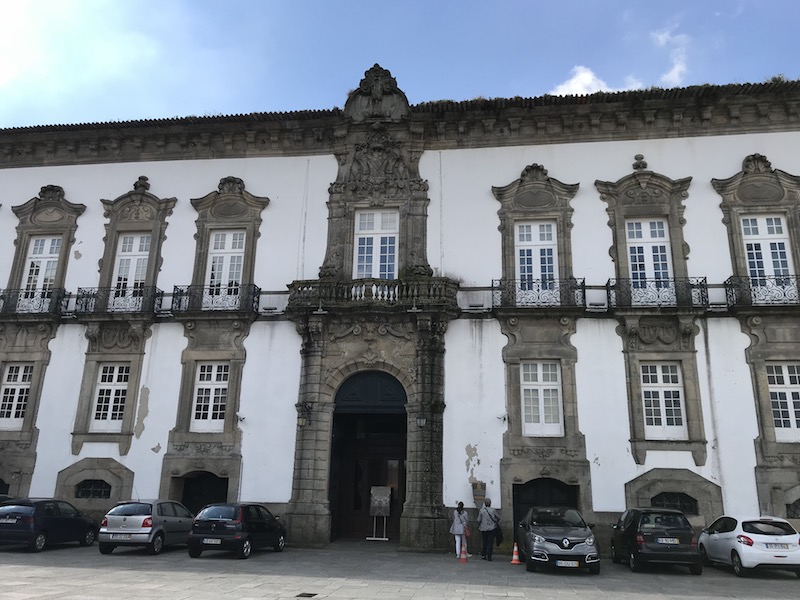
This little medieval tower was restored and is now one of the tourist offices (mind you, it was *not* the tourist office that our walking tour left from, which we missed).
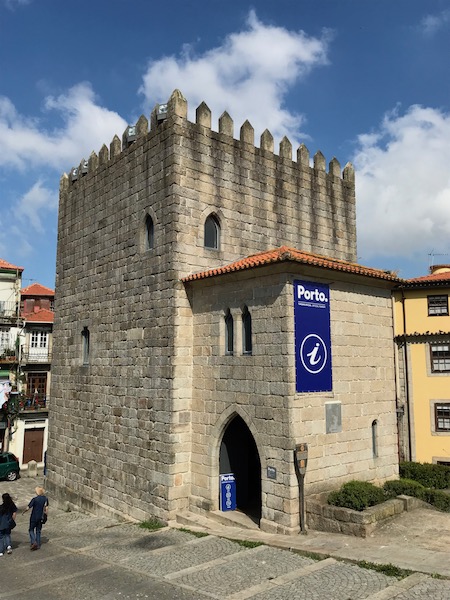
I mentioned that we missed a tour ... we had planned and booked a walking tour of medieval Porto, which we were supposed to meet up with the guide "at the tourist office near the Cathedral". Well, the tower (above) is a tourist office AND it was just across from the square at the front entrance to the Cathedral. Well, we waited and waited, attempted to call the contact number, nothing. So finally we gave up and as we were leaving, we saw that there was another tourist office on the other side, across the street. Oh well. So instead, we decided to take the tourist hop-on-hop-off bus, so most of the buildings, we only saw the exterior of (because we didn't take time to hop off much).
We saw several buildings that caught our eyes. This first one is the MOOV hotel, which I just thought was a lovely building. The second is the Reis & Filhos jewelry shop, founded in 1880, with its Nouveau Art cast-iron façade with bust of a woman. The third is the Teatro Municipal Rivoli building, with this ornate carving around the top corner.
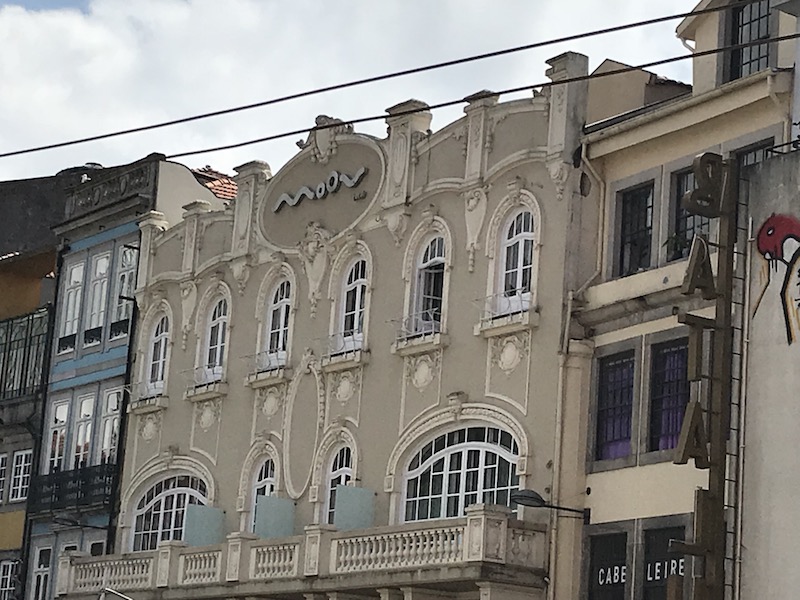
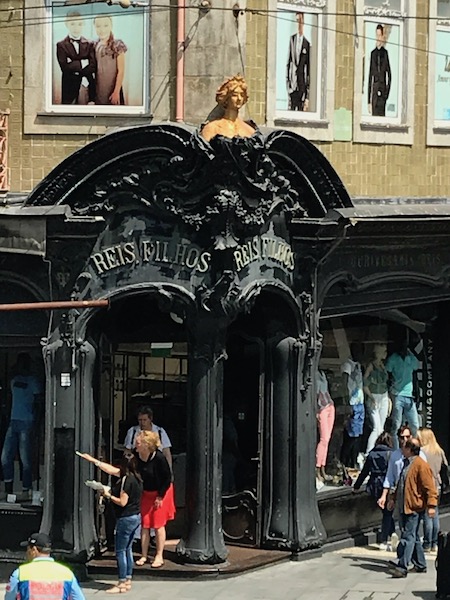

The rectory building of the University of Porto with the Fonte dos Leões, or Fountain of Lions. The university is the 2nd largest in Portugal (after Lisbon) and dates back to 1911. The fountain was actual done in France and there is another almost just like this fountain in England.
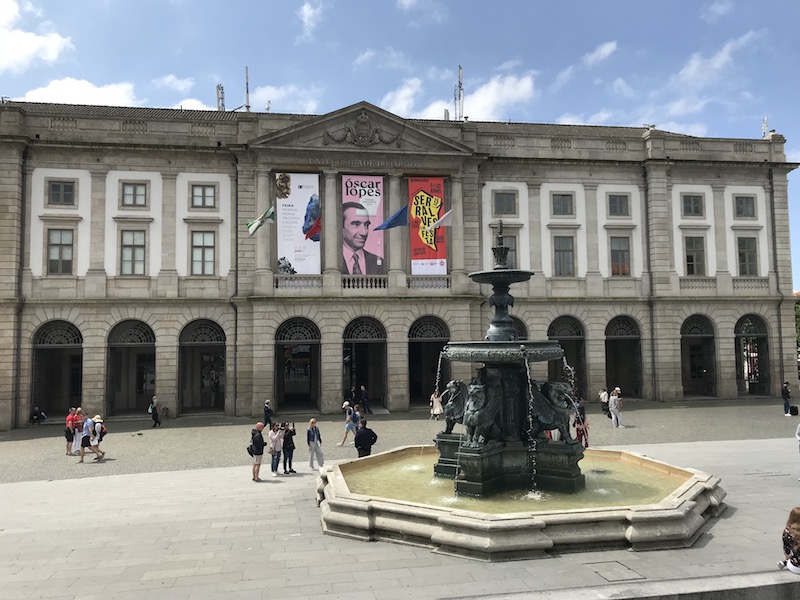
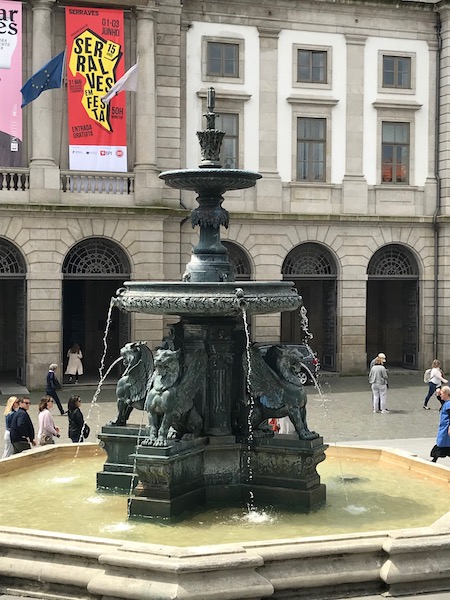
Igreja do Carmo is a late 18th century baroque church that has a well-known tiled side facade. It is one of Porto’s best examples of rococo architecture. The tiled panel (added in 1912) on the facade pays tribute to Nossa Senhora (Our Lady). It is connected to its "twin church" by a house.


And the twin church is the Igreja dos Carmelitas Descalços. I mentioned above that the two churches are separated by a house ... it is a very narrow (1 meter wide) house that was inhabited until the 1980's. The house was built so that the two churches would not share a common wall and to prevent any relations between the nuns of Igreja dos Carmelitas and the monks of Igreja do Carmo. This is the earlier of the two churches and was built in the mid-17th century with the exterior completed in 1628.
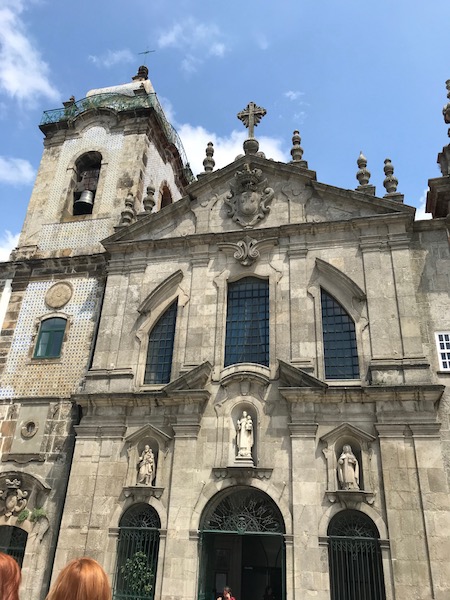
This is the former Relação Prison, completed in 1796, is now the Portuguese Center of Photography. It was in this prison that the famous Portuguese writer Camilo Castelo Branco wrote his most famous work, “Amor de Perdição”, in 1861. The writer had been sentenced for adultery and based on the story about his uncle, Simão Botelho, who had also been imprisoned there, and like the characters in the book, he had lived a tragic and forbidden love story that would lead him to his death.
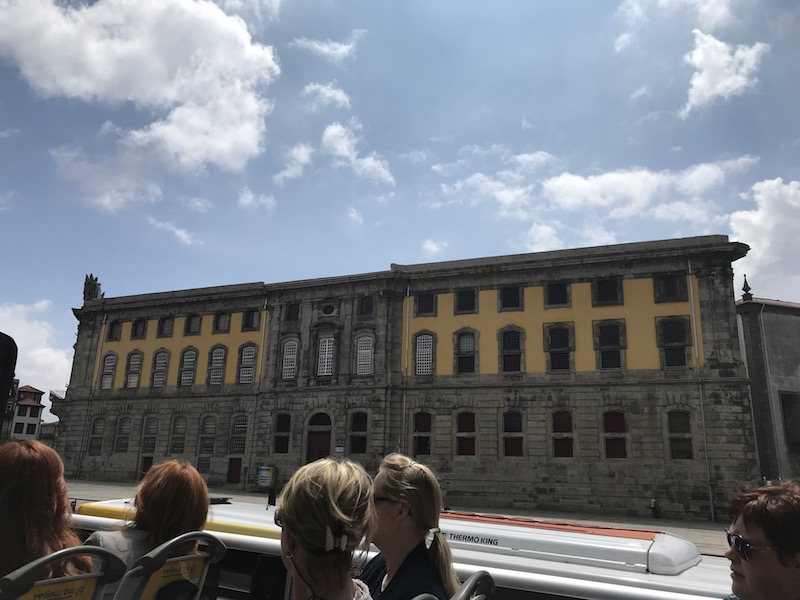
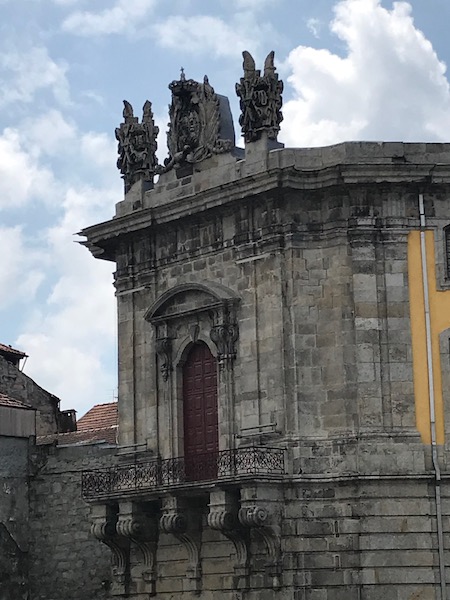
Porto has a metro system, but also an old tram system. There are 3 routes and all use vintage tramcars. The first tram line was a car pulled by a mule, started in 1872. 6 years later, after multiple new lines were added, the first was converted to steam power, and in 1895, electric traction was introduced. Mule-drawn cars were retired in 1904.
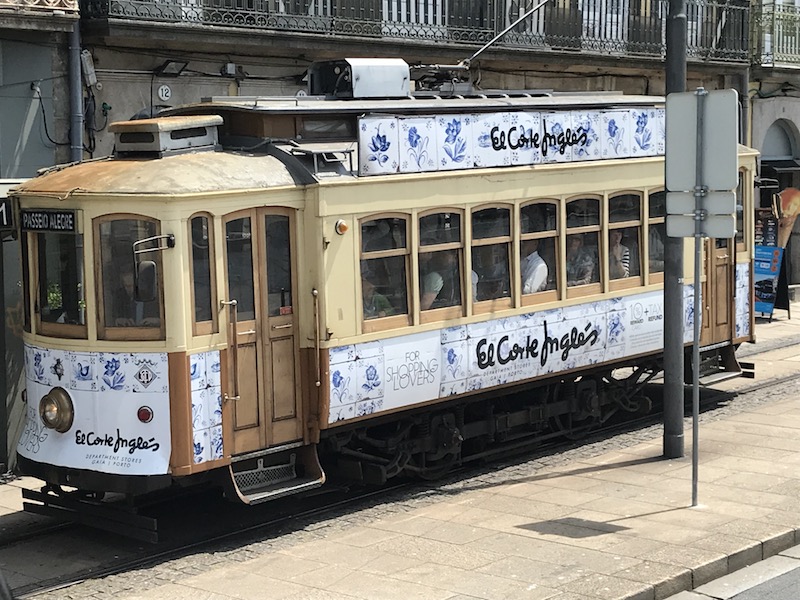
The Monument of Infante Dom Henrique was erected in 1894. There is a statue of the Prince standing next to a globe as well as two sculptural groups at the base of the monument. One represents a figure of Victory leading two steeds and two Tritons, to commemorate the triumph of Portuguese navigations. The other is a female figure, symbolizing the Faith of the Discoveries.

Palácio da Bolsa is the Stock Exchange, a 19th century neoclassical palace. It is located beside the St Francis Church of Porto, which was once part of the St Francis Convent, founded in the 13th century. In 1832, during the Liberal Wars, a fire destroyed the cloisters of the convent but spared the church. In 1841, Queen Mary II donated the convent ruins to the merchants of the city, who decided to use the spot to build the seat of the Commercial Association.
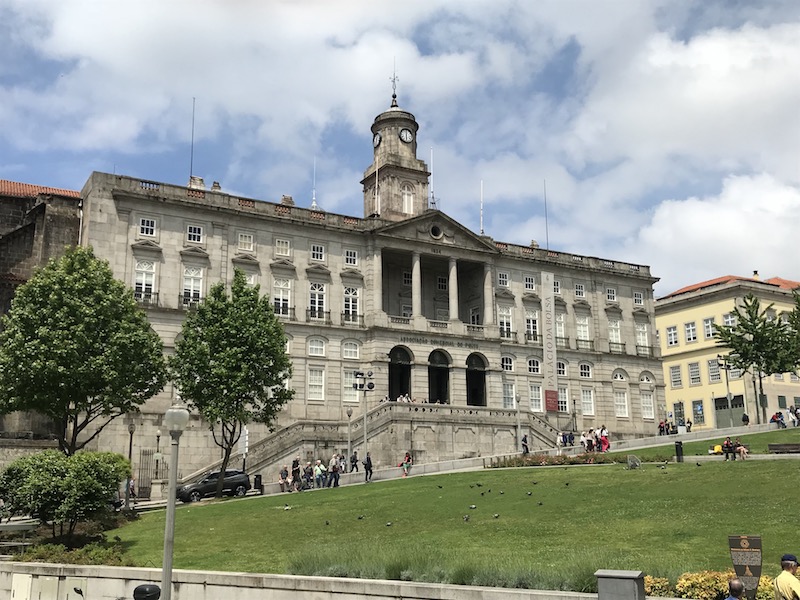
This massive red iron building is the Mercado Ferreira Borges, a market built in 1885 and named after a famous politician from Porto that supported the liberal troops during our civil war in the 19th century. Interesting trivia is that although this was built to replace an older market, it never actually replaced it, and was never used as a market.
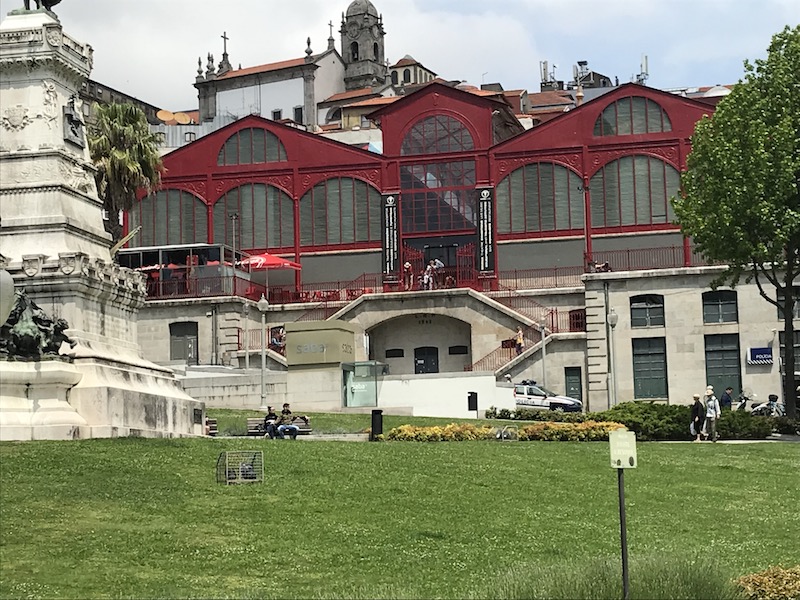
Some nice views of the water from the Gaia side.

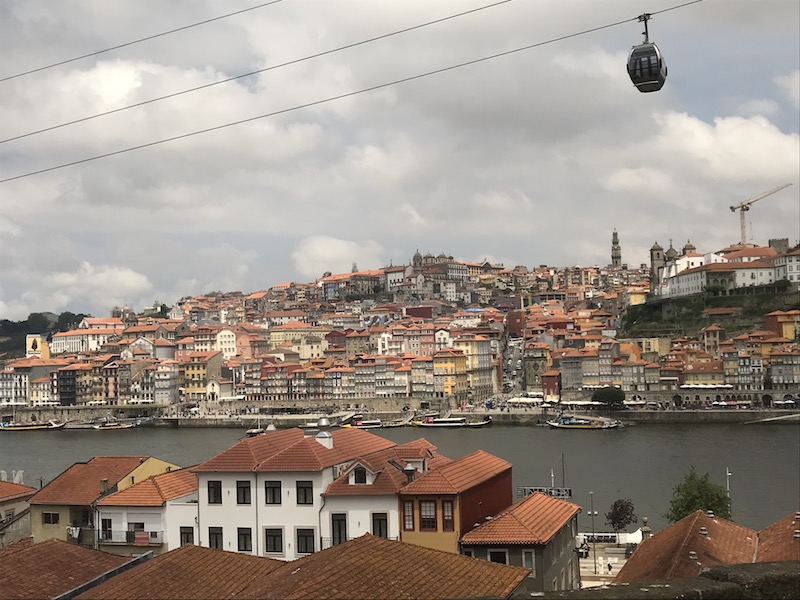
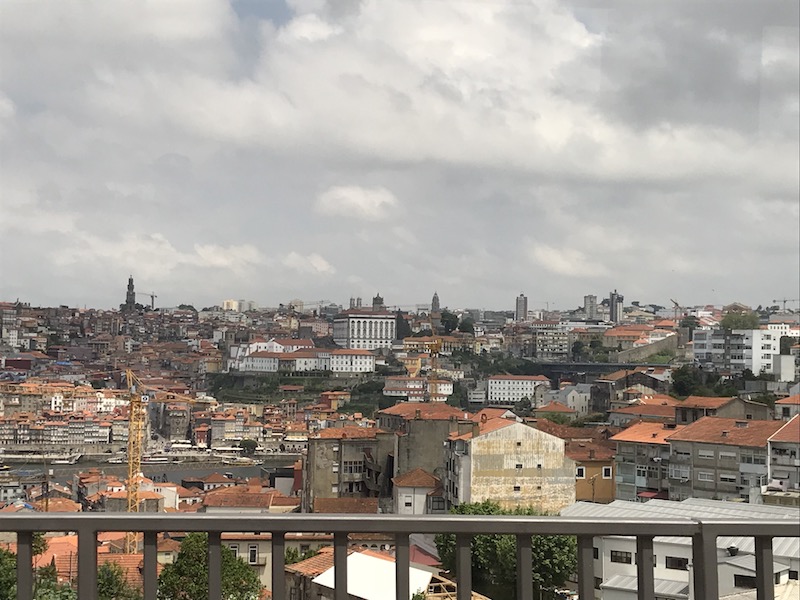
We then stopped for another port tasting, this time away from the main "cellar area" at Quinta da Boeira. The house and gardens date back to 1850 while the Port wine company dates to 1920. Inside the visiting center, there is an exhibition of replicas of ships and galleons from the 15th to the 16th century. Then you could walk through the gardens, check out the mansion, and look at the world's largest wine bottle, built in 2014, which honors the quality and diversity of Portuguese wine. The mansion features Belle Époque architecture with azulejos ceramic tile decorations up under the eaves.






A nice view of the Dom Luis bridge from one of the other bridges as we were on the tour bus.

Another view of the convent from Day 1, this time from one of the bridges.

I actually have no idea what this building is, but I thought it had a great facade!


The first São João National Theater was built at the end of the 17th century, although it was destroyed by fire in 1908 and rebuilt on the same spot. It was completed in 1918 and inaugurated in 1920 with a presentation of Giuseppe Verdi's Aida.

This is a monument to King Dom Pedro V, nicknamed "the Hopeful", who was King of Portugal from 1853 to 1861.

This church, the Igreja Paroquial de Santo Ildefonso, was right next to our hotel near Batalha Square. It was finished in 1739 in a proto-Baroque style. The façade, dating to 1932, is of the same azulejo tiles that we see around town. The entire front is covered in these blue-and-white tiles, approximately 11,000 of them! They depict scenes from the life of St Ildefonsus and allegories from the Eucharist.



The interior is nicely decorated with several statues, but probably the most known part of the interior is the baroque/rococo carved altarpiece, dating from the mid-18th century by Nicolau Nasoni. The nave has a with wooden ceiling and ornamental plaster casts around the walls. There are side chapels with Neoclassical altars.





The stained glass windows were replaced in 1967.

Igreja da Misericordia was built in the 2nd half of the 16th century although it has undergone various changes during the 18th century. The façade shows the influence of Rococo architecture. We were on the bus tour at this point in time, and so, no interior pictures.

In the middle of Praca da Liberdade, or Liberty Square, is a monument to King Peter IV. It was installed in 1866 and shows King Peter IV riding a horse and holding the Constitution that he had fought to protect during the Liberal Wars.

This building is the Camara Municipal do Porto, or Porto City Hall. The building was built between 1920 and 1957. The building was delayed and interrupted numerous times, which is why it took so long to complete. The Neoclassical granite façade is decorated with a dozen sculptures representing the various activities that have always been linked to Porto (the wine culture, industry, and navigation).


We then did yet another Port wine tasting, this time at the Calem cellars, along with a Fado show. What is Fado, you ask? It is a type of music that can be traced back to the 1820's in Lisbon. It is characterized by mournful tunes and lyrics, often about the sea or the life of the poor, and infused with a sentiment of resignation, fatefulness and melancholia. Here you can see the 2 guitarists (one with a specific "Portuguese guitar") and then two different singers, one young lady and an older gentleman. They each sang separately and then a couple songs together.





I attempted to get a couple of videos as well so that you can hear them sing. The first is just the young lady.
And now the gentleman.